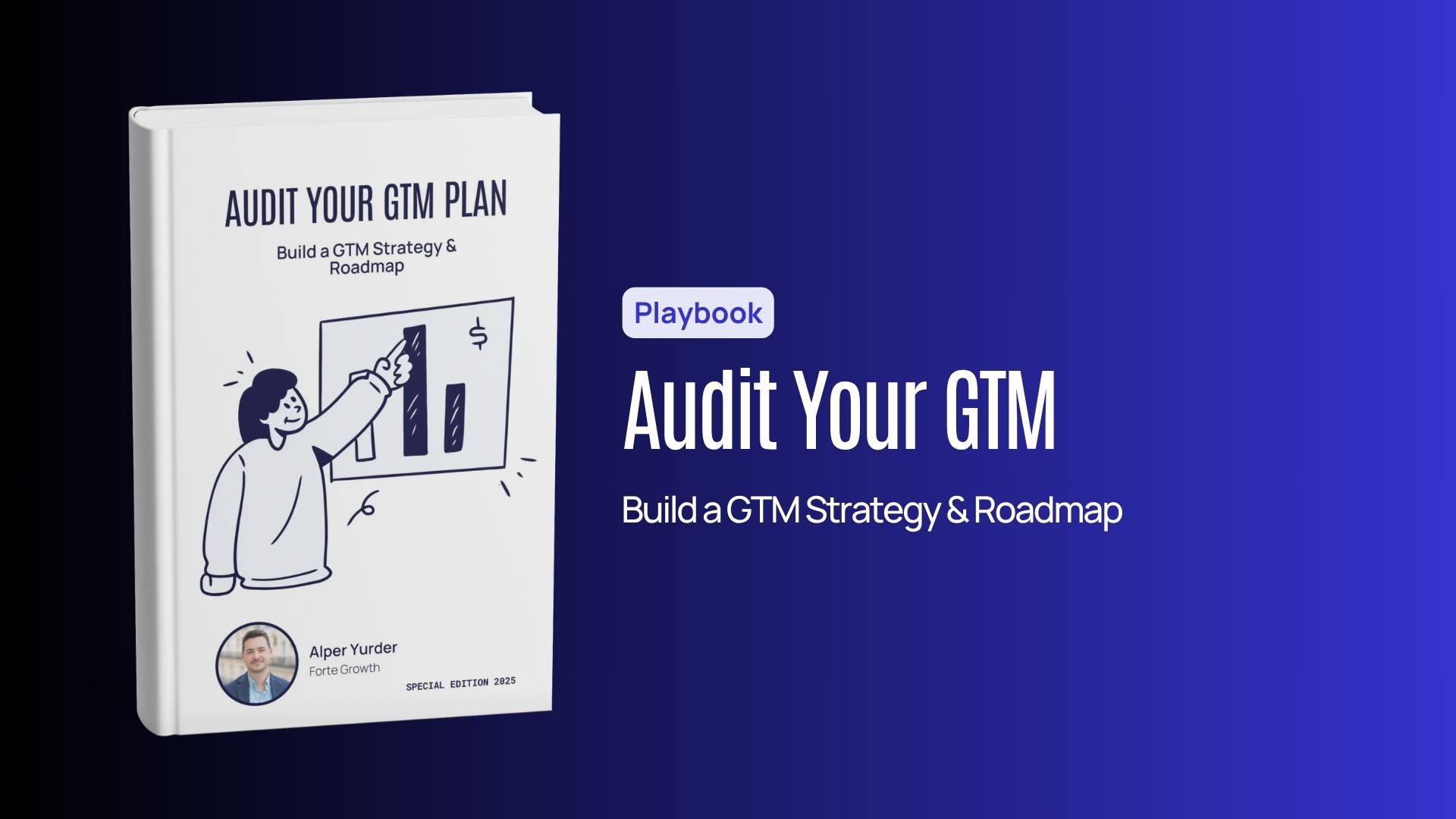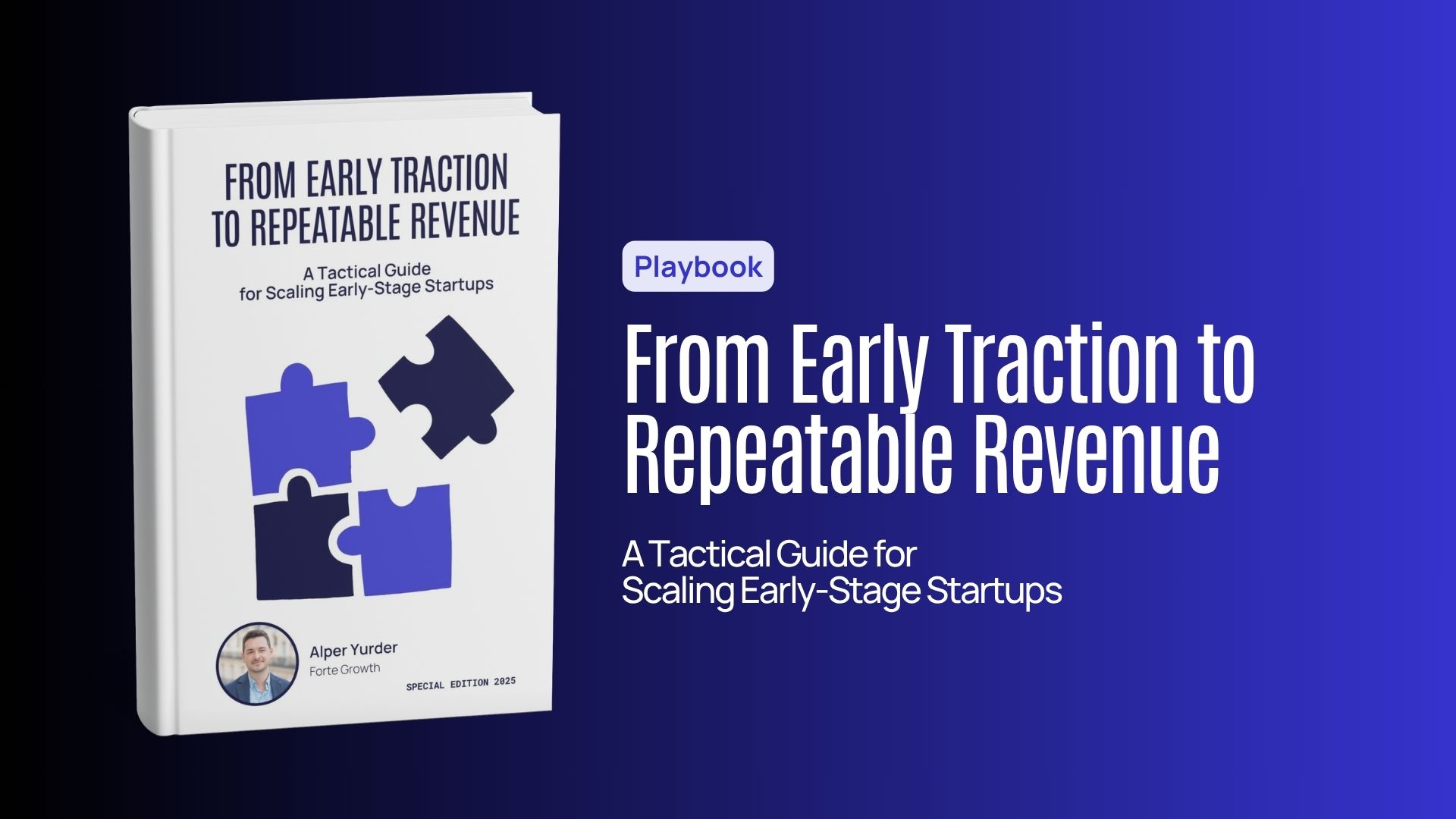Most startups don’t fail because of bad products. They fail because they never cracked go-to-market. Without a clear GTM roadmap, even great ideas can fall flat.
For early-stage teams between pre-seed and Series B, the most effective growth strategy starts with alignment. Not headcount. Not a big marketing push. Just clarity on who you serve, how you reach them, and what makes them convert.
This guide outlines a practical, founder-led process to audit your GTM and build a system that drives real traction.
1. Start With the Right Questions
Before jumping into tactics, ask the three questions that define your GTM readiness:
- How do we generate demand consistently and affordably?
- How do we convert that demand into revenue?
- How do we activate and retain customers to grow lifetime value?
Reflect on these individually, then bring the team together to align around the answers. Use a one-pager template to structure your thinking and set a clear direction.
2. Run a Full GTM Audit
Before writing another outbound sequence or updating your homepage, take stock of what you already have:
- Is your messaging pain-based and buyer-aligned?
- Do you have at least one channel that reliably drives inbound or outbound leads?
- Are you personally closing deals and learning from objections?
- Is your CRM tracking conversion and deal velocity?
- Can you hand over repeatable steps to the next GTM hire?
This audit gives you a real starting point and shows you what to fix first.
3. Prioritize Founder-Led Execution
At early stage, the founder is the GTM. Before building a team, build confidence in your process:
- Do the selling yourself to learn the fastest
- Use LinkedIn and content to build trust with buyers
- Automate tasks with AI before you hire
You don’t need to scale people. You need to scale signal. That starts with the founder doing what doesn’t scale.
4. Follow a Simple Execution Framework
Break your strategy into four steps:
- Message-Market Fit: Test your ICP and positioning
- Demand Generation: Experiment with outbound, content, and referrals
- Sales-Market Fit: Build a system that helps you close
- Qualification and Delivery: Focus on the right buyers and improve post-sale handoff
Document every insight. The result is not just a GTM plan, but a playbook you can improve each week.
5. Pick Channels That Fit Your Stage
Not all traction channels work at early stage. Focus on the ones that give you fast feedback.
Scalable options:
- Cold outreach with personalized AI tooling
- SEO and fast blog creation
- LinkedIn content from the founder
- Freemium or product-led growth
High-signal options:
- Direct outreach to other founders
- Referral loops and warm intros
- Live user interviews
- Meaningful comments and DMs
Start with one or two. Validate what works before layering on more.
6. Use a Lightweight GTM Stack
You can run your GTM motion without an expensive tool stack. A lean setup might include:
- Outbound: Apollo, Clay, Dripify
- Content: Canva, Napkin, Gamma
- Automation: Zapier, Make, n8n
- CRM: HubSpot or Pipedrive
- Insights: Intercom, Mixpanel
- Docs: Notion, Google Drive
This allows you to build and test without engineering delays or budget overkill.
7. Turn Strategy Into a Roadmap
Build a 30, 60, and 90-day GTM plan that aligns your team and shows progress to investors:
- Define key outcomes and traction goals
- Share a content calendar and weekly outreach plan
- Track everything in a Notion hub or dashboard
Make sure everyone has access, context, and a clear role in execution.
Audit Your GTM
A strong GTM doesn’t start with growth hires or agencies. It starts with clarity.
This playbook is designed to help you reflect, align, and move faster than teams stuck chasing too many tactics at once. If your startup is at the inflection point between building and scaling, use this audit process to create real traction and a repeatable engine.
Your GTM roadmap is not a static doc. It is a living system that grows with your learning.
%201.png)




%202.png)